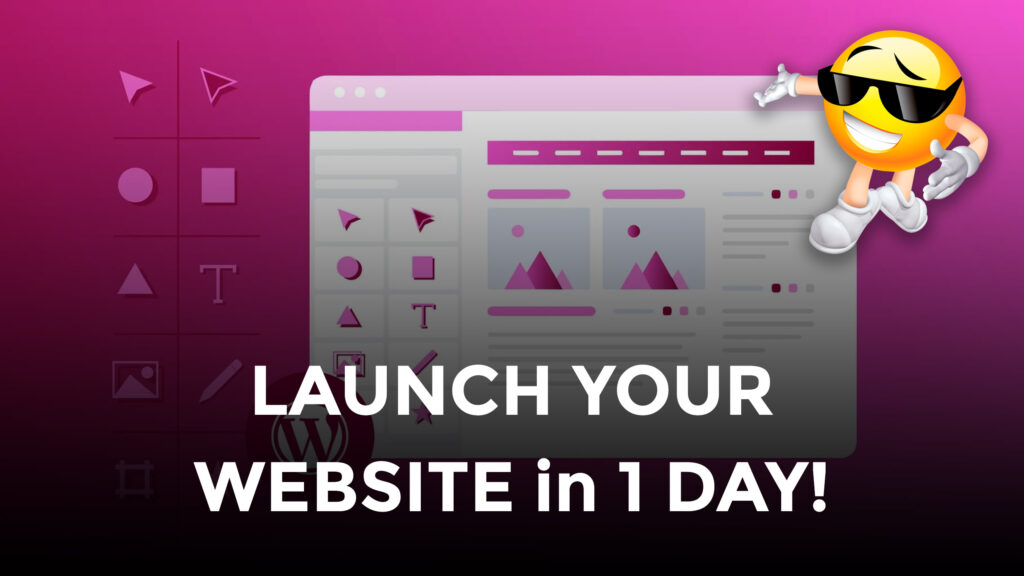In today’s digital age, data has become a valuable asset for businesses, organizations, and individuals alike. However, with the increasing dependence on technology, the risks of cybercrimes, data breaches and data theft have also grown significantly. With cybercriminals constantly finding new ways to exploit weaknesses in data security systems, it’s essential to take proactive steps to protect your Personally Identifiable Information (PII), Protected Health Information (PHI) and more from cyberattacks, data breaches and data leaks. In this blog post, we will discuss what data leaks are, the types of data leaks, some examples of data leaks, their consequences, some terminologies related to cybersecurity and how to secure yourself from these risks.
Data leaks and breaches
A data leak is the unauthorized transfer of data from a computer or a network to an external location. It can happen due to human error, malware, or hacking. Data leaks can occur in various forms, including data breaches, data theft, and leaks of Personally Identifiable Information (PII) and Protected Health Information (PHI).
PII includes information that can be used to identify an individual, such as name, address, phone number, and social security number whereas PHI includes health-related information, such as medical history, diagnoses, and treatments. PII and PHI data leaks can result in identity theft, financial fraud, and healthcare fraud.
A data breach occurs when an unauthorized party gains access to a company’s computer system, network, or database. It might occur due to a cyber attack, system failure, or employee negligence. Data breaches can result in the theft of sensitive information, such as financial data, trade secrets, and customer information.
Also read: Launch your website for free!
Consequences of data leaks
Here are some potential consequences of data leaks:
- Financial loss: Data leaks can result in financial losses for both individuals and businesses. For individuals, data leaks can lead to identity theft, which can result in fraudulent charges and damaged credit scores. For businesses, data leaks can result in lost revenue, legal liabilities, and regulatory fines.
- Reputational damage: Data leaks can result in reputational damage for individuals and businesses. When personal information is leaked, it can cause embarrassment, loss of trust, and damage to one’s reputation. For businesses, data leaks can result in a loss of customers, negative publicity, and damage to the brand’s reputation.
- Legal liabilities: Data leaks can result in legal liabilities for businesses. When sensitive data is leaked, businesses can be held liable for damages caused to affected individuals. Businesses may also face regulatory fines and lawsuits for failing to protect personal information.
- Regulatory fines: Data leaks can result in regulatory fines for businesses. Many countries have data protection laws that require businesses to protect personal information. When businesses fail to comply with these laws, they can face significant fines and penalties.
- Business disruption: Data leaks can result in business disruption for both individuals and businesses. When personal information is leaked, individuals may need to spend time and resources to restore their identity and prevent further damage. For businesses, data leaks can result in a loss of productivity, reputation, and revenue.
- Damage to intellectual property: Data leaks can also result in damage to intellectual property. When sensitive information, such as trade secrets or proprietary information, is leaked, it can result in damage to a company’s competitive advantage and innovation.

Data Breach Examples
There have been several high-profile data breaches in recent years, here are some examples of popular data breaches:
- Equifax (2017): One of the largest data breaches in history, Equifax exposed the personal data of 147 million consumers, including names, addresses, birthdates, social security numbers, and driver’s license numbers. Equifax agreed to pay at least $575 million to settle lawsuits related to the data breach.
- Yahoo (2013-2014): Yahoo suffered multiple data breaches between 2013 and 2014, which exposed the personal data of all 3 billion user accounts. The stolen data included names, email addresses, dates of birth, and encrypted passwords. Yahoo faced numerous lawsuits related to the data breaches, including a $50 million settlement with affected users.
- Marriott International (2018): Marriott International announced that its Starwood guest reservation system had been hacked, compromising the personal data of 500 million guests. The stolen data included names, addresses, phone numbers, email addresses, passport numbers, and payment card information. Marriott International faced numerous lawsuits related to the data breach, including a $123 million fine imposed by the UK Information Commissioner’s Office.
- Target (2013): Target suffered a data breach in 2013 that exposed the personal data of 110 million customers. The stolen data included names, addresses, phone numbers, and payment card information. Target agreed to pay $18.5 million to settle lawsuits related to the data breach.
- Capital One (2019): Capital One suffered a data breach in 2019 that exposed the personal data of 106 million customers and applicants. The stolen data included names, addresses, dates of birth, social security numbers, and bank account numbers. Capital One agreed to pay $80 million in fines and penalties related to the data breach.
- Facebook (2018): Facebook suffered a data breach in 2018 that exposed the personal data of 50 million users. The stolen data included names, email addresses, phone numbers, and other profile information. Facebook faced numerous lawsuits related to the data breach, including a $5 billion fine imposed by the US Federal Trade Commission.
Also read: How to make Dollar Card in Nepal.
Terminologies
Before we dive into how you can protect yourself from these risks, let’s understand some of the related terminologies first.
- PII: Personally Identifiable Information. It is any information that can be used to identify a specific individual. Examples include name, address, phone number, email address, social security number, etc.
- PHI: Protected Health Information. It is any information about an individual’s health status, health care, or payment for health care that can be linked to a specific individual. Examples include medical records, lab results, insurance information, etc.
- DLP: Data Loss Prevention. It is a set of tools and processes used to prevent sensitive data from being lost, stolen, or otherwise compromised.
- Machine Learning Technology: It is a type of artificial intelligence that allows software applications to learn from the data and become more accurate in predicting outcomes without human intervention.
- Tokenization: It is the process of replacing sensitive data with unique identification symbols that retain all the essential information about the data without compromising its security.
- API Keys: Application Programming Interface Keys. They are unique codes that are used to authenticate and identify users of an API.
- GDPR: General Data Protection Regulation. It is a regulation in EU law on data protection and privacy for all individuals within the European Union (EU) and the European Economic Area (EEA).
- HIPAA: Health Insurance Portability and Accountability Act. It is a US law that provides data privacy and security provisions for safeguarding medical information.

Cybersecurity and Data Security Threats
As a normal internet user, you may face several cybersecurity and data security threats on a day to day basis. Some of the most common threats include:
- Phishing attacks: These are fraudulent attempts to obtain sensitive information, such as usernames, passwords, and credit card details. They typically come in the form of emails, text messages, or social media messages that appear to be from a legitimate source.
- Malware: Malware is any type of malicious software designed to harm your computer or steal your data. This can include viruses, trojan horses, and ransomware.
- Identity theft: This is when someone steals your personal information, such as your name, address, and social security number, in order to impersonate you or commit fraud.
- Wi-Fi eavesdropping: When you connect to a public Wi-Fi network, your data is transmitted over the airwaves, which means it can be intercepted by hackers. This is known as Wi-Fi eavesdropping.
- Password attacks: These are attempts to guess or steal your password, which can give hackers access to your accounts and personal information.
- Social engineering: This is a tactic that hackers use to trick you into giving up your personal information. For example, they may call you and pretend to be from a legitimate organization in order to get you to reveal your login credentials.
- Insider threats: These are threats that come from within your organization, such as employees who intentionally or unintentionally leak sensitive data.
To protect yourself from these threats, it is important to use strong passwords, avoid clicking on suspicious links or downloading unknown attachments, use antivirus software, and be wary of any unsolicited requests for personal information.
Also read: Why NPR is less Valuable than USD.
Secure Yourself
Here are some tips to help keep your personal data safe:
- Use strong passwords and two-factor authentication: Passwords are your first line of defense against data breaches. Make sure your passwords are strong and unique, and use two-factor authentication whenever possible. Two-factor authentication adds an extra layer of security by requiring a second form of identification, such as a code sent to your phone.
- Keep software up to date: Keep your operating system, web browsers, and other software up to date with the latest security patches and updates. These updates often include fixes for security vulnerabilities that cybercriminals could exploit.
- Be cautious with emails and attachments: Phishing emails and malicious attachments are common ways that cybercriminals attempt to steal personal data. Be cautious when opening emails from unknown senders and never download attachments from suspicious sources.
- Use a virtual private network (VPN): A VPN encrypts your internet traffic, making it more difficult for cybercriminals to intercept and steal your personal data.
- Use antivirus and antimalware software: Antivirus and antimalware software can detect and remove malicious software from your device, protecting it from potential data breaches.
- Be careful with social media: Social media platforms can be a goldmine of personal data for cybercriminals. Be careful about sharing personal information on social media and adjust your privacy settings to limit the amount of personal information that is visible to others.
- Monitor your accounts and credit reports: Regularly monitor your financial accounts and credit reports for any unauthorized activity. If you notice any suspicious activity, immediately contact the concerned authority to block your bank accounts/cards to secure yourself and proceed to take further action.


